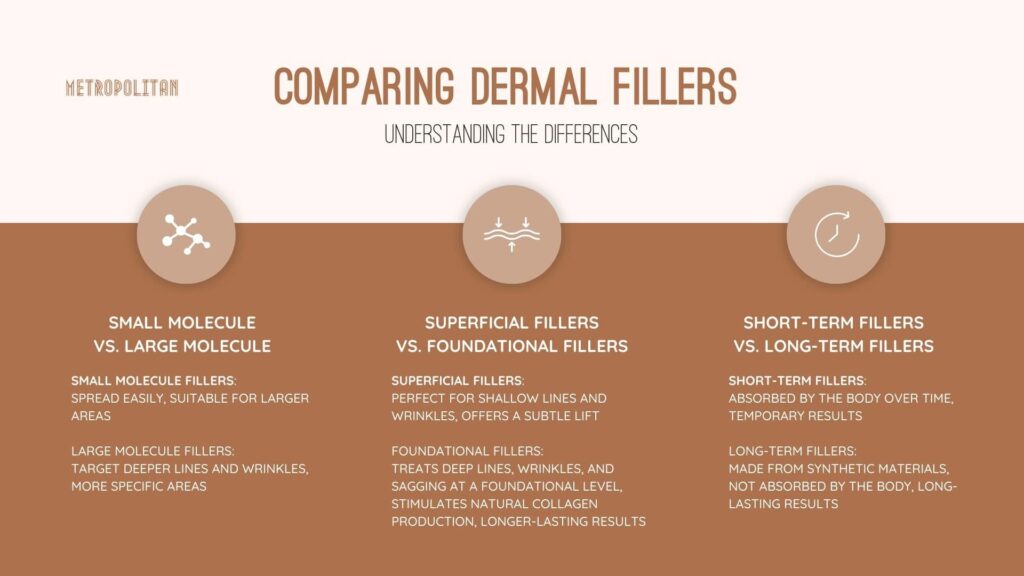In a world where youthfulness is often equated with beauty, the allure of dermal fillers has captured the imagination of many. These innovative injectables promise to restore volume, smooth out wrinkles, and enhance facial contours, creating the illusion of a more youthful visage.
But what exactly are these enchanting formulations, and how long can one expect their effects to last? The answers to these questions might be more complex than they initially appear. As we delve into the intricacies of dermal fillers, we’ll explore their various types, the science behind their formulation, and the longevity of their results, unraveling the myths that often cloud this transformative cosmetic treatment.
Whether you’re considering your first appointment or simply curious about the procedure, this guide will illuminate the fascinating world of dermal fillers, helping you navigate your options with confidence.
Types of Dermal Fillers

When exploring the vast landscape of dermal fillers, it’s essential to understand the diverse types available, each tailored for specific aesthetic desires and skin concerns. Hyaluronic acid fillers, one of the most popular choices, offer a natural plumpness by attracting moisture, making them ideal for enhancing lips or smoothing out fine lines.
Meanwhile, collagen-stimulating fillers, such as poly-L-lactic acid, go a step further by encouraging your body to produce its collagen over time, resulting in a more gradual enhancement that can last for years. Calcium hydroxylapatite fillers, often used for deeper wrinkles and volume restoration in areas like the cheeks, present a thicker consistency that can achieve remarkable results.
Lastly, there are biostimulatory fillers, which not only restore volume but also enhance skin quality by rejuvenating the underlying structures. Each type serves a unique purpose, catering to individual needs and ensuring that whether you seek subtle refinement or a more dramatic transformation, there’s a filler designed just for you.
Hyaluronic Acid Fillers

Hyaluronic Acid Fillers have surged in popularity, captivating many with their remarkable ability to restore volume and enhance facial contours. This naturally occurring substance, found in our skin, acts like a sponge, drawing moisture in to keep skin plump and hydrated. As a result, these fillers can smooth out fine lines, restore youthful fullness to cheeks, and even plump up lips with a soft, natural look.
One of their appeals is the temporary nature of the results; they typically last anywhere from six months to a year, offering a commitment that’s less daunting than surgical options. However, it’s crucial to consult with a skilled practitioner, as the technique and skill of the injector can significantly influence the outcome, ensuring you achieve the youthful glow you desire without compromising on safety.
Calcium Hydroxylapatite Fillers
Calcium hydroxylapatite fillers, commonly known as Radiesse, are a remarkable innovation in the world of dermal aesthetics. Comprised of a mineral found naturally in the bones, these fillers boast a unique dual-action approach: they instantly add volume while simultaneously stimulating the body’s collagen production over time.
Upon injection, patients often notice immediate results—smoother, more youthful skin, but the benefits don’t just stop there. As the calcium microspheres encourage natural collagen synthesis, the skin gradually improves in texture and elasticity, providing long-lasting rejuvenation that can endure for up to a year or more.
Whether addressing deeper lines or enhancing facial contours, calcium hydroxylapatite fillers offer a natural solution with a remarkable ability to meld into the skin, highlighting one’s natural beauty while keeping the aging process at bay.
Conclusion

In conclusion, dermal fillers stand as a versatile solution for individuals seeking to enhance their appearance and restore youthful volume. Understanding their various types, applications, and longevity allows potential users to make informed decisions about their aesthetic goals.
While results can vary, most fillers last between six months to two years, making them a compelling option for those looking for a non-surgical approach to rejuvenation. For more comprehensive information and expert guidance on dermal fillers, consider visiting spbeauty.co.uk, where you can find resources to assist you on your journey to beauty.


